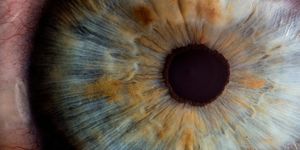Cardiovascular Risks And Ehlers-Danlos Syndrome
Ehlers-Danlos Syndrome (EDS) affects the body’s connective tissues. These tissues are proteins that provide support for the gums, ligaments, organs, blood vessels, and more.
Defects in these tissues, often result in hypermobility of the joints and hyperextensibility of the skin. This means that the joints are less stable and more prone to injury. The skin of EDS patients may be soft and fragile. They may develop wounds that heal slowly or that reopen after having healed. Specific symptoms depend on the type of EDS a person has.
Symptoms of the syndrome include chronic musculoskeletal pain, gum disease, or even mitral valve prolapse in the heart. One of the EDS subtypes may also lead to a rupture in the blood vessels, uterus, or intestines. These complications can be fatal if a large vessel ruptures.
EDS is a genetic disorder resulting from mutations in any of 19 genes. Some of the 13 EDS forms are inherited, with parents passing an abnormal gene to their offspring. The risk of passing on the condition ranges from 25 to 50%, depending on the condition subtype.
To diagnose the EDS, doctors will generally perform a physical exam, including any family or medical history. Usually, the classic symptoms of skin and joint concerns, coupled with any positive family history, is enough to make a diagnosis.
If there is a doubt that EDS is the cause of a patient’s symptoms, doctors may take a genetic sample to confirm. It is much more likely a person has joint hypermobility, which affects 1 in 30 people, then it is to have EDS, which affects about 1 in 5000.
If EDS is confirmed, several treatment options will be explored. Because EDS is the name for a group of conditions, and not a single diagnosis, treatment has to be carefully tailored to each patient.
Some patients may be able to manage their condition with lifestyle changes effectively. These changes might include avoiding high-impact and contact sports.
Unfortunately, this may not be sufficient treatment for everyone. Other options include physical or occupational therapy, gentle exercise, pain medication, or surgery.
The above video from Mayo Clinic goes into detail about EDS.
Sources: National Institutes of Health, Mayo Clinic











